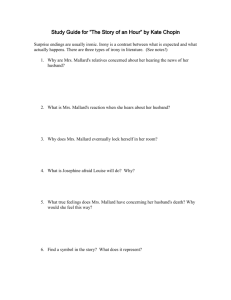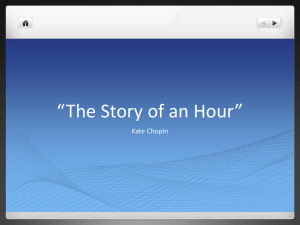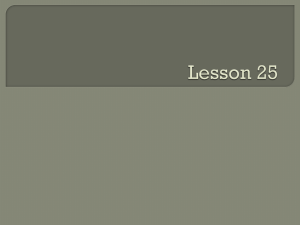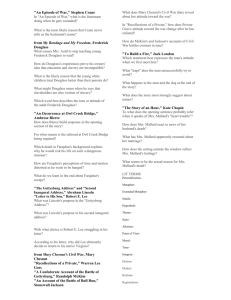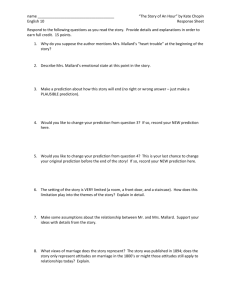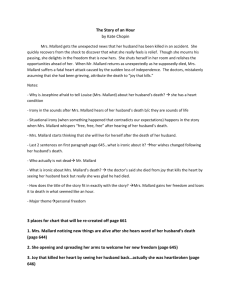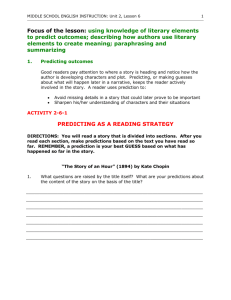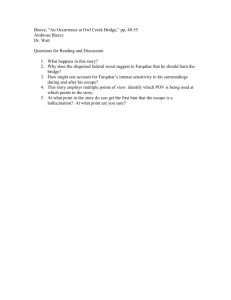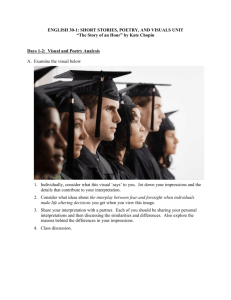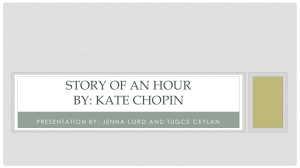Name - Brookwood High School
advertisement
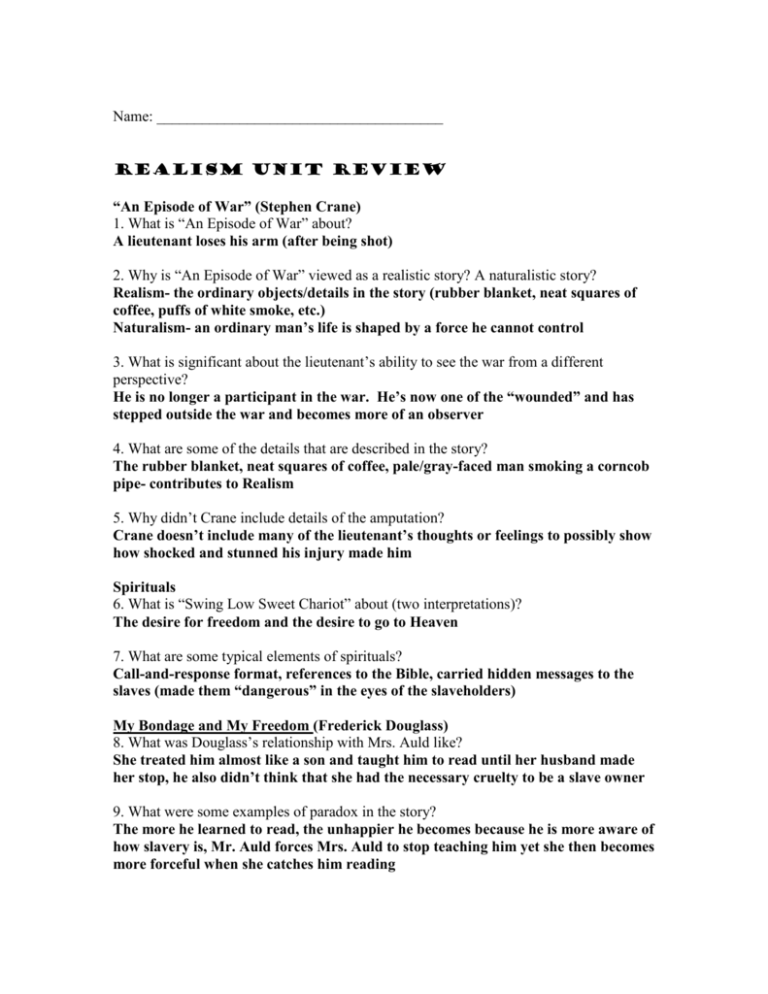
Name: ______________________________________ Realism unit review “An Episode of War” (Stephen Crane) 1. What is “An Episode of War” about? A lieutenant loses his arm (after being shot) 2. Why is “An Episode of War” viewed as a realistic story? A naturalistic story? Realism- the ordinary objects/details in the story (rubber blanket, neat squares of coffee, puffs of white smoke, etc.) Naturalism- an ordinary man’s life is shaped by a force he cannot control 3. What is significant about the lieutenant’s ability to see the war from a different perspective? He is no longer a participant in the war. He’s now one of the “wounded” and has stepped outside the war and becomes more of an observer 4. What are some of the details that are described in the story? The rubber blanket, neat squares of coffee, pale/gray-faced man smoking a corncob pipe- contributes to Realism 5. Why didn’t Crane include details of the amputation? Crane doesn’t include many of the lieutenant’s thoughts or feelings to possibly show how shocked and stunned his injury made him Spirituals 6. What is “Swing Low Sweet Chariot” about (two interpretations)? The desire for freedom and the desire to go to Heaven 7. What are some typical elements of spirituals? Call-and-response format, references to the Bible, carried hidden messages to the slaves (made them “dangerous” in the eyes of the slaveholders) My Bondage and My Freedom (Frederick Douglass) 8. What was Douglass’s relationship with Mrs. Auld like? She treated him almost like a son and taught him to read until her husband made her stop, he also didn’t think that she had the necessary cruelty to be a slave owner 9. What were some examples of paradox in the story? The more he learned to read, the unhappier he becomes because he is more aware of how slavery is, Mr. Auld forces Mrs. Auld to stop teaching him yet she then becomes more forceful when she catches him reading 10. What did slaves and women have in common in the South? They were both under the authority of the white male 11. Explain the following quote: “Conscience cannot stand much violence.” Compromise one belief and the conscience is easily broken down “An Occurrence at Owl Creek Bridge” (Ambrose Bierce) 13. What is significant about the sound of Farquhar’s watch? His senses are becoming stronger 14. How does the sequence of events play a role in the story? Through the flashback, the reader discovers the reason why Farquhar is being hanged 15. How does Bierce portray suspense in the story? With the unexpected sequence in which the events are related 16. Why is Farquhar being hanged? He is suspected of having tampered with the Owl Creek Bridge 17. What purpose does flashback serve? To give background information on Farquhar (learn why he is in trouble) “To Build a Fire” (Jack London) 18. What external conflict takes place in “To Build a Fire”? Man vs. Nature 19. What are some characteristics of the man? Overconfident, doesn’t need to listen to advice 20. What internal conflict takes place in the story? The man’s body and his will 21. What did the man think about the old-timer of Sulphur Creek? He thought his advice was ridiculous 22. What is the main idea of the story? Nature is more powerful than humans “The Notorious Jumping Frog of Calaveras County” (Mark Twain) 23. Describe the main characters of the story. Simon Wheeler- storyteller, gets confused about different people Jim Smiley- clever and competitive Andrew Jackson- dog that would win fights by biting a dog’s back legs Dan’l Webster- frog that could out jump every frog 24. What happened to Andrew Jackson? He loses the fight after being paired with a dog with no back legs. He had a broken spirit and died 25. How does Twain add humor to his works? With unexpected plot changes, misunderstanding between characters, colorful names of characters, regional dialect 27. How is Smiley outsmarted? Someone put quail shot in his frog making him too heavy to jump “The Story of an Hour” (Kate Chopin) 28. Was Mrs. Mallard’s response to her husband’s death expected? No. Most women in her time would have had a more quiet response (not a sudden, wild weeping) 29. How does “a long life” play a role in the story? She prayed for a long life once she realized she would be on her own 30. What is Mrs. Mallard’s initial reaction to her husband’s death? Sudden, wild weeping 31. What was Mr. and Mrs. Mallard’s marriage like? He was controlling of her and she was unable to live her own life 32. What kinds of irony are present in the story? Situational- neither the reader nor Mrs. Mallard knows her husband is actually alive; Mrs. Mallard was looking forward to having her own life now that her husband is dead then he walks in the door Dramatic- Mrs. Mallard supposedly dying of the “joy that kills”; Josephine’s fear that her sister “will make herself” ill by grieving alone in her room Terms: 33. Realism- focused on ordinary people faced with the harsh realities of everyday life 34. Naturalism-focused on forces beyond the individual’s control 35. Local Color- characters and details unique to a particular geographic area 36. Regionalism- writing about specific geographical areas; uses local color
